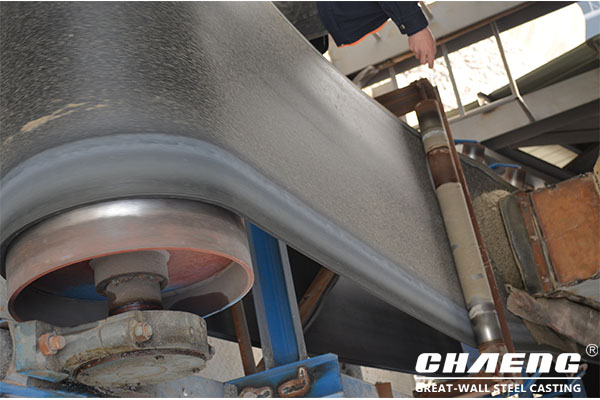13 Oct,2021 UTC+8 Views:
The overall efficiency of the cement rotary kiln is determined by many aspects. Generally speaking, the speed of the rotary kiln has a proportional relation to feeding volume. If the feeding capacity is too large or too small, it will seriously affect the speed of the rotary kiln, and even failure to the whole machine. So, it is important to accordingly adjust the feeding capacity.

In the differentiation furnace, the material powder is the heat-absorbing element, and it is also the target of the process. If feeding capacity is too small, the furnace heating will rise, but limit the absorption of heat, resulting in temperature rise or overheating, and causes a reduction in furnace production. On the contrary, If the feeding capacity is too large, the material powder concentration becomes higher, the quantity of burning heat will be far less than the heat of differentiation. So, the material differentiation rate and furnace temperature will be cold down, in vain of extra fuel either. Therefore, the exact feeding amount will be accurately controlled in a certain range, depends on the system capacity and primary parameter.
The method of adjusting feeding amount: the primary factor is the thickness of the material layer in the rotary kiln, which means the appropriate material loading rate is crucial. The feeders must be synchronous with kiln speed and keep a uniform material layer. The adjusts of feeding amount in the differentiation stage depend not only on the status of the kiln interior but also on the condition in the differentiation process, which is more than 50% heating consumption. However, the feeder after differentiation will be changed in order to keep uniform material layers and ignore other factors. It eventually will cause shakes in the kiln, but still valuable and necessary because of less heating time and higher heating transfer rate, rather than the rotary kiln adjusting process.

To sum up, the quality of clinker out of the rotary kiln is determined by strictly feeding amount control. The in-time feeding adjustment is necessary along with the working conditions. Xinxiang Great Wall Machinery has many years of experience in the production of rotary kilns, can meet 300-3000 t/d cement production line construction requirements. If you have any needs or questions, please consult online!
Pre: Limestone Rotary Kiln Technology Features and Advantage
Next: Great Wall Steel Casting: Specializing in the production of slag pot